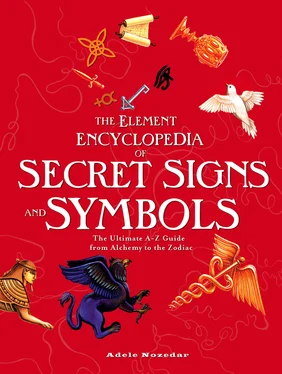Here is a brief list of some of the foods that have been considered, at some time or other, to have aphrodisiac qualities.
NUTS, SEEDS, AND BULBS
Aniseed
Falls into the category of seeds. Also aids digestion and sweetens the breath which could explain why the Romans considered it a useful ingredient for seduction.
Because of its shape, the star anise was sacred to the Goddess and therefore a potent fertility symbol.
In general, all seed-bearing fruits are aphrodisiacs. Their numerous seeds, their texture, scent, and color make them a naturally sexy foodstuff.
Infamous as the fruit that Eve gave to Adam, a symbol of sexual awakening.
Sensuously red and juicy, and containing a potent symbol of new life inside the stone. “Popping the cherry” is a slang term for losing one’s virginity.
Raspberries and strawberries
Libido enhancing because of their color, their many tiny seeds, and their resemblance to nipples.
The tomato is also called the “Love Apple” and is regarded as an aphrodisiac, because of the prolific number of seeds contained within it. However, the name itself is the result of an accidental misinterpretation. Because they were originally a yellow color they were called “Pomo D’or” in Italy, the Apple of Gold. It was also called the “Pomo d’Moro”—the apple of the Moors, referring to its Spanish origins. From here, it was just a slip of the tongue to the French, “Pomme d’Amour,” or Love Apple.
Many of these are self-explanatory, all considered powerful simply because of their shape. Asparagus, carrots, and cucumber are just a few of the “phallic vegetables.”
The Mexicans called the avocado tree the “testicle tree,” since the fruit dangles down in pairs. The sensual texture of avocado adds to its reputation.
The banana flower resembles the phallus. Islamic tales say that Adam and Eve covered their sexual parts with banana leaves rather than the more common fig leaves.
Because they resemble little phalluses, cloves were considered to enhance male potency. The clove tree was planted to signify the birth of a baby boy in certain parts of Indonesia, the health of the tree reflecting the health of the child as it grew up.
As well as being the same shape as the vesica piscis, the sacred doorway through which matter emerges into spirit, the almond is a nut and therefore carries the potential for new life.
The plethora of tiny seeds inside the fig is symbolic of fertility, and the moist plumpness of the fruit has a very sensual, feminine element to it.
The oyster’s resemblance in form, scent, and texture to the female genitalia is renowned. Oysters have had a long history as an aphrodisiac and their reputation is well known. The pearl that is sometimes found inside the oyster was said to increase the powers of arousal, because it resembles the clitoris.
Other shellfish, such as mussels, fall into this same category.
Anything sharp tasting or pungent is believed to stimulate the senses, so spices are often used as libidoenhancing ingredients.
This is the ground root of a fennellike plant. It has a powerful odor, and despite its folk name, Devil’s Dung, it is used as a sexual stimulant in Ayurvedic medicine.
The glorious scent of cinnamon was reputedly used as oil by the Queen of Sheba to help her capture the attention of King Solomon.
Also comes under the category of seeds. Reputed to stimulate appetites of all kinds.
The Egyptians who used this as a sexual stimulant cannot have known that it contains plant estrogens that can help balance female hormones. These estrogens also enhance the breasts.
Considered to have aphrodisiac powers because of their sharp sensual taste, and because their roots resemble the human form.
A Greek legend says that Menthe, a beautiful nymph, was transformed into the herb because Persephone was jealous of the beautiful scent that captivated her husband, Pluto.
The sweetness of honey made it a rarity for ancient man. It is likely to have given humankind its first instance of alcohol in the form of mead, and its intoxicating effect has distinct aphrodisiac qualities. Bees are themselves symbols of fertility, and honey gives its name to the honeymoon period spent by newlyweds immediately after their marriage.
The melting point of chocolate is the same as that of blood temperature, and so its mouthfeel alone is a sensual experience. Added to this, chocolate contains mood-lifting substances, including phenylethylamine which, when released into the bloodstream, induce feelings of euphoria. Still arguably the most popular food given as a gesture of love. When the sixteenth-century Spanish conquistador Hernán Cortés heard about its reputation as an aphrodisiac, he planted two thousand trees.
This is a word of Greek origin meaning to “turn away,” and refers to a specific kind of amulet designed to ward off evil of some kind. The amulet therefore features a protective symbol, such as an eye (which wards off the evil eye, by staring right back at it), or the Hand of Fatima.
See First signs: Arc.

There are two famous arks, Noah’s Ark and the Ark of the Covenant. Both held extremely valuable objects, and so the ark symbolizes a treasure chest, a secure repository for items of secret or sacred significance. The word comes from the Latin, arca. The Greeks described the same item as a chest.
There are also two Hebrew definitions for the ark. One explains it as a wooden chest, the other as a flat-roofed building twice as long as it was high and wide. The ark could also float, and the same word is used to describe the casket that the baby Moses was found in, floating in the reeds.
In the Bible, the Ark that God commands Noah to build has a very specific set of instructions as to size, measurements, and materials used. The momentous treasure contained in this “box” was a breeding pair of every animal in the world, a genetic repository to safeguard the future of all creatures on Earth after the Deluge had washed everything else away. The Ark was God’s promise of protection to His chosen people. However, as Barbara G. Walker points out in her Woman’s Dictionary of Symbols and Sacred Objects , the scale of the Ark must have been mind-boggling if its purpose as outlined in the Bible were to be taken literally, since it would have had to hold
7,000 species of worms, 80,000 species of molluscs, 30,000 species of crustaceans, 50,000 species of arachnids, 900,000 species of insects, 2,500 species of amphibians, 6,000 species of reptiles, 8,600 species of birds, and 3,500 species of mammals, as well as food for one and all.
Читать дальше













